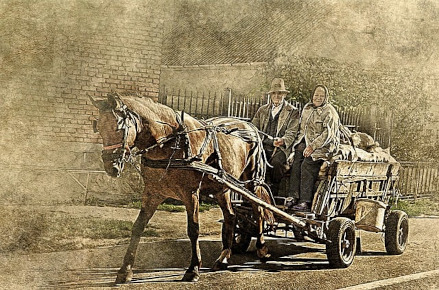Everyone has probably at least once heard of the 1920s. Whether in the history lessons in school or in movies or books. Often we learn about it as the “roaring twenties” where everyone partied all day and wore sparkling outfits. But there is a contrary to all the money and glamour. With this article, I want to shed some light on the side of the 1920s which is not talked about enough. The side of the poor, the workers, the minorities.

The roaring twenties or the Jazz Age began with the end of the First World War (1914-1918). At the beginning of the 1920s, the American soldiers that served in the war came back home and experienced European economic progress for the first time in their lives. This longing for improvement led to a rapid rate of economic growth in the US. The roaring twenties introduced major changes happening in society. On August 18th 1920 (white) women received the right to vote and in the same year, they contributed to the presidential election for the first time. On November 2nd the first radio broadcast aired and the radio brought families closer together through the ritual of sitting together and listening to the news. In general, after the war, the main focus wasn’t on work anymore but instead was redirected to enjoyment. Louis Armstrong brought change to the music with Jazz and sound films started flickering over the screens. Women started to wear short skirts and pants, which was unimaginable just a couple of years prior. They cut their hair short and wore pearls, boas and feathers on their dresses and in their hair. Because of the gained knowledge about aircraft from the war, flying became more accessible and the first passenger airplanes were created. While the economy was on a high, the people also started to question things they have simply accepted before. Charles Darwin’s evolution theory was one of them. Music, books and movies started to be exported all over the world and people grew interested in the American way of living. Many owned their first car, which led to better roads, or telephones which allowed them to stay connected with friends and family. From 1919 to 1929 industrial production increased by 30% and by the end of the 1920s the US made up nearly half of the world’s industry manufacturing.
However, there was also a downside to the 1920s. While the wealthiest 5% shared 34% of income by the end of the 1920s, over 60% of the population fell under the poverty line. In 1929 the lowest livable income for a family of five was estimated to be 2,500$ a year. At that time, 40% of families earned less than 1,500$ a year. 17% of Native Americans even only had 200$ a year at their disposal. 1921 is also the year when the Ku Klux Klan, a terroristic group of white supremacists, resurfaced. Their terrorism mainly was directed against Catholics, Jews and Black people.

During World War One the farmers living in the US increased their production to export products to the European Allies. This led to an oversupply once the war ended and caused prices to drop. Additionally, European Agriculture came back on the market and grain from Argentina and Australia entered the market. These factors, plus the tariff war that I will come back to later, led to the farm income dropping from 22 billion in 1919 to 13 billion in 1929. In general, many people were in high dept during the 1920s since they took out a loan to be able to afford a car or a radio. During these 10 years, 60% of cars and 80% of radios were bought on credit. In 1924 an immigration law, harshly restricting immigration, was passed which led to the housing market crash. That is why; in 1929 only half as many new houses as in 1924 were built. Another important factor why the economy of the US didn’t last long at that high level was the previously mentioned tariff war. The two tariff laws Fordney-McCumber of 1922 and Hawley-Smoot of 1930 were passed as an attempt to protect the American industry from international competitors. As a response, many countries put high taxes on American exports which resulted in them dropping and in no profit for the US.
The roaring 20s finally ended in October 1929 with the stock market crash. Over 26 million dollars were lost and thus began the period of the Great Depression.
The time from 1920 to 1929 was a very formative decade for the US and Europe. It brought changes and inventions but also ultimately led to an economic crash and the Great Depression. This period has so much more interesting to offer and I hope that the next time you watch a movie about the 1920s you keep the other side of the coin in mind.
Sources:
https://www.ncpedia.org/history/20th-Century/1920s
https://www.bbc.co.uk/bitesize/guides/zp77pbk/revision/2
https://www.aier.org/article/the-overuse-of-the-roaring-twenties/
https://www.digitalhistory.uh.edu/disp_textbook.cfm?smtID=2&psid=3432
https://www.history.com/news/roaring-twenties-labor-great-depression
https://www.studysmarter.de/schule/englisch/landeskunde-englisch/roaring-twenties/

